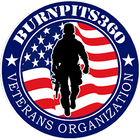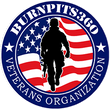A Letter From The Under Secretary For Health Regarding Deployment-Related Respiratory Diseases and Constrictive Bronchiolitis

Ms. Rosie Torres
DEPARTMENT OF VETERANS AFFAIRS Under Secretary for Health Washington DC 20420
October 25, 2023
Founder and Executive Director Burn Pits 360
201 North Fourth Street
Robstown, TX 78380
Dear Ms. Torres:
Thank you for your August 23, 2023, co-signed letter to the Department of Veterans Affairs (VA) regarding respiratory disorders. I am responding on behalf of the Department.
Your dedication to improve the lives of those who have served our country is commendable and mirrors VA's ongoing efforts under the Promise to Address Comprehensive Toxics Act of 2022. We understand that the subset of Veterans dealing with post 911 respiratory issues, deployment-related respiratory diseases (DRRD) and constrictive bronchiolitis (CB) pose unique challenges for medical evaluation and benefits distribution. Your recommendations are insightful, and I appreciate the expertise and passion you bring to these vital issues affecting Veterans.
In light of the issues you have outlined, I assure you that VA is conducting research to potentially support the addition of specific diagnostic codes and evaluative criteria for DRRD, which may also encompass CB. While we do not currently have a standard diagnostic code for these conditions, since 2010 VA has instructed claims processors to rate them analogously to existing respiratory diagnostic codes in accordance with 38 C.F.R. § 4.20. Most commonly, this includes codes such as chronic bronchitis (6600), bronchiectasis (6601), bronchial asthma (6602) and pulmonary emphysema (6603). These codes allow us to evaluate and rate the conditions based on the symptoms, treatment and their physiological impact in lieu of a specific diagnostic code, thereby ensuring Veterans receive the compensation to which they are entitled.
VA is conducting a detailed review of both claims-related data and scientific research to understand how to best identify and evaluate CB and other DRRDS more effectively, and how to avoid requiring invasive biopsies to establish a diagnosis. We are conducting a review of claims data and randomized case analyses to determine how claims for these conditions are being identified and decided, reviewing each stage of the process from initial claim establishment to evidence development and the ultimate rating decision. This data will help to inform the scope of the issue for Veterans seeking benefits related to these diseases and to identify any short-term administrative improvements that could be implemented to improve service to Veterans claiming similar respiratory conditions.
Additionally, claims processing experts are working in consultation with the VA Health Outcomes Military Exposures (HOME) team to ensure that we have the most current and applicable scientific data. The HOME team is involved in comprehensive research and clinical care concerning Veterans exposed to environmental and occupational hazards during service. Their activities include maintaining registries based on various exposures, providing clinical care through the War Related Illness and Injury Study Center, and conducting epidemiological studies to improve health care practices and policies for Veterans. HOME's research serves as an invaluable resource in our collective efforts.
VA will use the results of this research to determine if a new diagnostic code is necessary for the broader term, deployment related respiratory disease, which may encompass CB. This is part of ongoing work related to updating VA's schedule of rating disabilities for respiratory, ear, nose and throat and auditory diseases. Once the necessary scientific evaluation and data analysis are completed, and if amendments are required to our current schedule of rating disabilities, these proposed changes will be published in the Federal Register for public comment. There will be an opportunity for public comment as part of the proposed rulemaking process and we welcome any insights you have on our proposed solution to address proper evaluation of CB and other DRRDS at that time.
The inclusion of a broad range of expertise to study and address airborne hazard concerns and, in particular, DDRD is critically important. Among the expert panelists who wrote the consensus statements on DRRD, 40% were from leading academic medical centers. Additionally, many VA scientists and clinicians maintain dual appointments with their respective academic medical centers including many of the Nation's premier institutions. For example, our Post-Deployment Cardiopulmonary Evaluation Network (PDCEN) site directors and clinicians hold appointments at Vanderbilt University, the University of California - San Francisco, the National Jewish Health, the University of Michigan, the University of Maryland and Rutgers University.
The Airborne Hazards Burn Pits Center of Excellence (AHBPCE) and their PDCEN sites are best positioned to provide subspecialty-level evaluations for challenging cases and to disseminate their best practices to the broader VA and our civilian partners. This also ensures consistency in the workup and evaluation of these cases. Evaluation of these cases can occur at two levels. Not every case requires workup at a specialty center. VA uses a step-by-step approach for evaluating symptoms of shortness of breath to ensure that providers are equipped to handle the potential volume of Veterans with dyspnea and other respiratory symptoms. VA also looks for possible contributing factors to shortness of breath (including within the respiratory system) as well as other possible causes (including cardiovascular and musculoskeletal).
The step-by-step approach includes recommendations for when to make a specialty referral when a clinician has exhausted their local expertise and capabilities.
We agree that standard pulmonary function testing and exercise testing are foundational assessments for evaluating suspected DRRD, and these assessments are widely available across VA. Similar to the civilian health care sector, more sophisticated assessments, such as forced oscillometry, are less commonly available and less familiar to many pulmonologists within and external to VA. We incorporate forced oscillometry as a standard assessment at the AHBPCE and PDCEN sites, and this is currently being investigated in VA-supported research studies. Similarly, quantitative computerized tomography analysis, such as parametric response mapping, may provide unique insight into the small airways, and the early results (including those from Dr. Miller and our PDCEN colleagues) appear promising.
4DMedical's x-ray velocimetry technology is emerging and holds promise. We look forward to the outcomes of a VA-supported research project at the Nashville VA Medical Center (one of the PDCEN sites) to build on their case series. Data from this project, including comparison to existing imaging approaches, will be critical in informing its clinical utility for Veterans with DRRD.
Should you have any questions, please have a member of your staff contact, Eric Shuping, MD, Operations Director, HOME, at XXXXXXX. A similar letter has been sent to Dr. Miller.
We look forward to continuing to work collaboratively to improve the systems that provide their care and benefits. Thank you for your continued advocacy on behalf of Veterans.
Sincerely,
Shereef Elnahal, M.D., MBA










